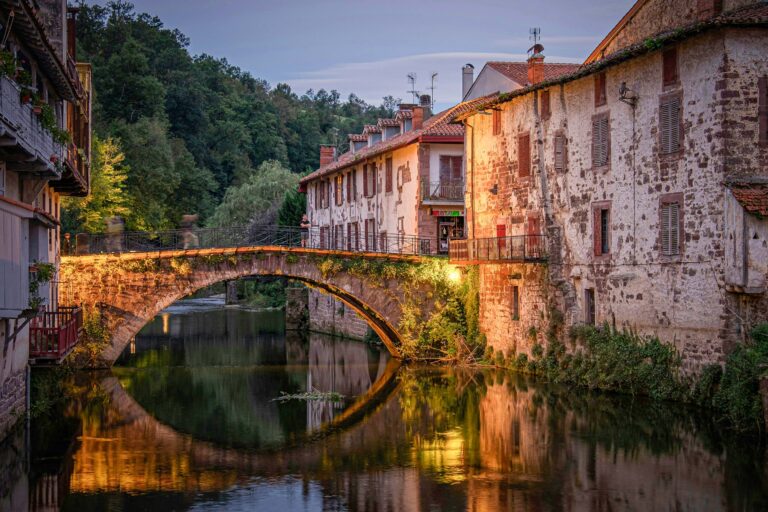
10 highlights of the Camino Francés
Get ready for your adventure along the Camino Francés with this list of 10 highlights that cannot be missed along the route.
France | Spain | Portugal

The Camino de Santiago, often referred to as the Way of St. James, is a legendary pilgrimage route that has captivated the hearts of travelers and spiritual seekers for centuries. This extraordinary network of trails leads pilgrims to the shrine of the apostle St. James the Great, located in the magnificent cathedral of Santiago de Compostela in northwest Spain. The Camino is not just a singular path but rather a vast network of routes, with the most popular being the Camino Francés. There are numerous starting points across Europe, each offering a unique experience and varying lengths of pilgrimage.
According to the official website of the Camino de Santiago, there are 10 different routes to reach Santiago de Compostela.
Total length: depends on the route you choose.
3 countries involved: France, Spain, and Portugal.
The primary pilgrimage path to Santiago traces an ancient Roman trade route, extending to Galicia’s Atlantic coast, concluding at Cape Finisterre. While modern knowledge places Cabo da Roca in Portugal as Europe’s westernmost point, the Romans, dubbing it Finisterrae (Latin for “end of the world” or Land’s End), perceived Cape Finisterre as such. At night, the Milky Way overhead seemingly guides the way, earning the route the moniker “Voie lactée” – the Milky Way in French. This historical trail reflects the blend of Roman heritage, medieval pilgrimage tradition, and celestial navigation along the Camino de Santiago.
The Camino de Santiago comprises several routes, each with its own unique characteristics and starting points. Here are some of the most popular Camino routes, along with brief descriptions of each:
Camino Francés (French Way)
– Starting Point: St. Jean Pied de Port (France) or Roncesvalles (Spain)
– Distance: Approximately 800 kilometers
– Highlights: Pyrenees, Pamplona, Burgos, León, Galician landscapes, and Santiago de Compostela
Camino del Norte (Northern Way)
– Starting Point: Irun (Spain) or San Sebastián
– Distance: Approximately 825 kilometers
– Highlights: Coastal landscapes, Basque Country, Asturias, and Santiago de Compostela
Camino Portugués (Portuguese Way)
– Starting Point: Lisbon or Porto (Portugal)
– Distance: Varies (approximately 620 km from Lisbon, 240 km from Porto)
– Highlights: Scenic coastal and inland routes, Porto, Ponte de Lima, and Santiago de Compostela
Camino Primitivo (Primitive Way)
– Starting Point: Oviedo
– Distance: Approximately 320 kilometers
– Highlights: Mountainous terrain, historic Oviedo, Lugo, and Santiago de Compostela
Camino Inglés (English Way)
– Starting Point: Ferrol or A Coruña
– Distance: Varies (approximately 120 km from Ferrol, 75 km from A Coruña)
– Highlights: Coastal landscapes, historical cities, and Santiago de Compostela
Via de la Plata
– Starting Point: Seville
– Distance: Approximately 1,000 kilometers
– Highlights: Southern Spain, Mérida, Salamanca, and Santiago de Compostela
Camino Finisterre
– Starting Point: Santiago de Compostela
– Distance: Approximately 90 kilometers
– Highlights: Extension to the Atlantic Coast, Finisterre, and Muxía
Camino del Salvador
– Starting Point: León
– Distance: Approximately 120 kilometers
– Highlights: Mountainous terrain, crossroads to Oviedo, and Santiago de Compostela
These are just a few examples, and there are additional variations and combinations of routes. Pilgrims can choose the route that suits their preferences in terms of scenery, difficulty, and cultural experiences. It’s important to note that the distances mentioned are approximate, and the actual distance covered may vary based on the specific paths taken. Additionally, pilgrims can start their journey from various points along each route, depending on the time available and personal preferences.
Coming soon
Signposting along the Camino de Santiago is essential for guiding pilgrims on their journey. Here are some common features of the signposting on the Camino:
Yellow Arrows: Yellow arrows are the most common and important signposts on the Camino. These arrows are painted on various surfaces, such as trees, rocks, buildings, and signposts, guiding pilgrims in the right direction. They help ensure that even in less populated or rural areas, pilgrims can find their way.
Shell Symbols: The shell is the traditional symbol of the Camino de Santiago. Pilgrims may encounter shells along the route, painted on signposts or incorporated into the landscape. The shell serves as both a wayfinding marker and a symbol of pilgrimage.
Milestones and Kilometer Markers: Along the Camino, you’ll find milestones or markers indicating the distance remaining to Santiago de Compostela. These markers help pilgrims gauge their progress and plan their daily walking distances.
Signposts with Distances: At key points along the route, you’ll find signposts indicating the distance to the next town or village and, sometimes, the distance to Santiago de Compostela. This information is helpful for planning daily stages.
Route Markers: In addition to arrows, route markers with the official Camino symbol may be present on the trail. These markers often indicate changes in direction or confirm that you are on the right path.
Information Boards: Some sections of the Camino have information boards providing details about the route, historical sites, and services available in the area. These boards can be helpful for gaining insights into the cultural and historical significance of the pilgrimage.
Hostel and Accommodation Signs: As you approach towns or villages, you may see signs directing pilgrims to albergues (hostels) or other accommodation options. These signs often include the distance to the lodging facilities.
Directional Signs: At intersections or crossroads, you may encounter signs with directional arrows indicating the way to Santiago de Compostela and other relevant destinations.
Pilgrims are encouraged to pay attention to these signs, especially the yellow arrows, to stay on the correct path. It’s also common for pilgrims to help one another by sharing information about the route. Overall, the signposting on the Camino de Santiago is designed to make the journey as straightforward and enjoyable as possible for those undertaking the pilgrimage.
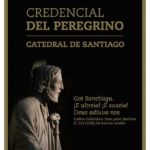 The Camino Pilgrim Passport, or ‘Credencial’, is the modern version of medieval safe-conduct documents, crucial for the Camino de Santiago.
The Camino Pilgrim Passport, or ‘Credencial’, is the modern version of medieval safe-conduct documents, crucial for the Camino de Santiago.
This Credencial is designed for pilgrims opting to journey on foot, horseback, by bicycle, or boat, completing the final kilometers to reach Santiago. It serves two practical purposes: gaining entry to hostels offering Christian hospitality and obtaining the Compostela from the Cathedral in Santiago, certifying the completed pilgrimage.
In your passport you will be collecting stamps (sellos in Spanish) each day along the way. In order to be eligible for your Compostela certificate upon arrival in Santiago, you must have collected at least one stamp per day or at least two stamps if you’re covering only the final 100km to Santiago. Stamps can be found in many places along the route: churches, albergues, shops, postal offices, etc.
Please ensure you carry your Pilgrim Credencial from the beginning of your journey. Fortunately, obtaining this document is straightforward, and you can acquire your Credencial from the following (online) locations:
Upon completing the Camino de Santiago, pilgrims have the opportunity to obtain the Compostela, a certificate issued by the Pilgrim’s Office in Santiago de Compostela as a testament to their pilgrimage. It is the counterpart of the “Testimonium”, the certificate of completion of the Via Francigena.
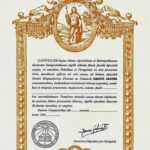 How to obtain your Compostela
How to obtain your CompostelaTo qualify for the Compostela, you must have walked at least the final 100 kilometers (or biked 200 kilometers) of any Camino route, or completed the last section of the Camino Portugués. Pilgrims are required to present their Pilgrim’s Credential as proof of their journey. The Credential serves as a record of the distances covered and serves as a symbolic passport of the pilgrimage. Once at the Pilgrim’s Office in Santiago, pilgrims submit their Credential, answer a few questions about their motivation for the journey, and receive the Compostela if their pilgrimage is deemed authentic. It’s a moment of joy and accomplishment, marking the end of an incredible pilgrimage experience on the Camino de Santiago.
Here’s the address of the Pilgrim’s Office where you can get your Compostela:
Pilgrim’s Reception Office (Oficina de Acollida ó Peregrino)
Rúa das Carretas, 33
15705 Santiago de Compostela
A Coruña, Spain
View on Google Maps
Or visit the official website of the Pilgrim’s Office.
Along the Camino de Santiago, pilgrims can find accommodation in a variety of options. Here are some common places to sleep along the Camino de Santiago:
Albergues (Hostels): These are budget accommodations specifically designed for pilgrims. They are the most common type of lodging on the Camino and can be found in almost every town along the route. Albergues often provide bunk beds in dormitory-style rooms, and pilgrims are required to have a pilgrim credential to stay in them.
Pensions and Guesthouses: In addition to albergues, many towns along the Camino offer private pensions and guesthouses. These options provide more privacy and may include amenities such as private bathrooms and sometimes breakfast.
Hotels: Larger towns and cities along the Camino de Santiago will have hotels, offering more comfortable and private accommodations. These can range from budget to luxury options.
Rural Houses (Casas Rurales): In some rural areas, you may find casas rurales, which are rural houses or cottages available for rent. These provide a more intimate setting and are common in smaller villages.
Monasteries and Convents: Some pilgrims choose to stay in monasteries or convents along the Camino, which can offer a unique and peaceful experience. Keep in mind that these may have specific rules and expectations for guests.
Camping: While not as common as other options, some pilgrims choose to camp along the Camino. There are campsites available in certain areas, but it’s essential to check in advance and be aware of the regulations.
Refugios: Similar to albergues, refugios are basic shelters for pilgrims. They are more rustic than albergues and may not have all the amenities, but they provide a simple and affordable place to rest.
Remember that during peak pilgrimage seasons, it’s advisable to book your accommodation in advance, especially in popular towns along the Camino. Additionally, some pilgrims prefer to walk without a set itinerary, allowing them the flexibility to choose accommodations as they go.
Along the Camino de Santiago, you’ll find a variety of dining options to suit different tastes and budgets. Here are some common places where pilgrims can eat along the Camino:
Albergue or Pilgrim Hostel: Some albergues (hostels) along the Camino offer meals to pilgrims, especially dinner and breakfast. This is a convenient option if you’re staying in these accommodations.
Cafes and Bars: Many towns and villages along the Camino have cafes and bars where you can stop for a quick snack, coffee, or a full meal. These are often popular places for pilgrims to rest and socialize.
Pilgrim Meals: Quite a lot of places along the route offer special “pilgrim menus” (menu del peregrino), which are affordable set meals for pilgrims. These often include a starter, main course, dessert, and a drink.
Restaurants: Larger towns and cities along the Camino de Santiago typically have a range of restaurants offering local and international cuisine. You can find anything from traditional Spanish dishes to more familiar options.
Local Markets: Some places along the Camino may have local markets where you can purchase fresh produce, bread, and other food items. This can be a great option for those who prefer to prepare their own meals or have a picnic.
Street Food: In certain locations, especially during festivals or special events, you might come across street vendors offering snacks or local specialties.
Picnics: Many pilgrims choose to carry some non-perishable food items with them, such as energy bars, nuts, and dried fruits. This can be handy for a quick bite between towns.
Cooking Facilities: If you’re staying in accommodations with communal kitchens, you may have the option to prepare your own meals using ingredients from local markets or stores.
Remember that the availability of dining options can vary depending on the specific route of the Camino, the time of year, and the size of the town or village. It’s a good idea to plan ahead, especially in more remote areas, and be open to trying local specialties along the way. Additionally, fellow pilgrims and locals are often excellent sources of recommendations for good places to eat.
The weather conditions on the Camino de Santiago vary depending on the season and the specific route you choose. The Camino traverses different regions of Spain, and each region may have its own climate characteristics. Here’s a general overview of the weather conditions during different seasons:
Spring (March to May):
Summer (June to August):
Autumn (September to November):
Winter (December to February):
It’s important to note that weather conditions can vary from year to year, especially in our current era where we are already witnessing the consequences of climate change, and regional differences play a significant role. The coastal routes may have more moderate temperatures, while the inland routes, such as the Meseta, are hotter in summer and colder in winter.
Pilgrims should be prepared for a range of weather conditions and pack accordingly. It’s advisable to check the weather forecast regularly, especially if you plan to walk during the shoulder seasons or winter. Additionally, the availability of accommodations and services may vary depending on the season, so it’s a good idea to plan and book in advance, especially during peak times.
Because the Camino de Santiago is the most famous and populated pilgrimage route in Europe, there is a wide variety of guidebooks available in many different languages. Below we list some of the most used and updated guidebooks in English on the market:
Camino Guides
– A Pilgrim’s Guide to the Camino de Santiago: St. Jean Pied de Port to Santiago de Compostela
– A Pilgrim’s Guide to Sarria – Santiago: the final 7 stages of the camino de Santiago Francés
– A Pilgrim’s Guide to the Camino Finisterre: Santiago – Finisterre – Muxía – Santiago
– A Pilgrim’s Guide to the Camino Inglés: Ferrol & Coruña — Santiago; The English Way also known as the Celtic Camino
– A Pilgrim’s Guide to the Camino Portugués: Lisbon – Porto – Santiago
– A Pilgrim’s Guide to the Camino Sanabrés & Camino Invierno
– Camino de Santiago Maps: St. Jean – Ronscevalles – Santiago
– Camino Portugués Maps: Lisbon – Porto – Santiago
Cicerone Press
– Camino de Santiago: Camino Frances (guide and map book – includes Finisterre finish)
– Camino de Santiago – Via Podiensis
– The Camino Ingles and Ruta do Mar: to Santiago de Compostela and Finisterre from Ferrol, A Coruna or Ribadeo
– The Camino del Norte and Camino Primitivo: to Santiago de Compostela and Finisterre from Irun or Oviedo
– Walking La Via de la Plata and Camino Sanabres: the Camino de Santiago from Seville to Santiago de Compostela and Astorga
– Cycling the Camino de Santiago
Village to Village Map Guide
– Camino Frances: St Jean – Santiago – Finisterre
– Camino Primitivo
– Camino Portugués
– Camino del Norte
– Camino Inglés: Ferrol to Santiago on Spain’s English Way
– Camino Finisterre: Santiago de Compostela – Finisterre – Muxía
There are several companies offering luggage transport along the Camino de Santiago. New ones may have emersed since we wrote this post, so we advise you to regularly check on Google or other search engines to verify the existence of new services.
Services known to us at the moment are:
For more information about the Camino de Santiago, we invite you to visit the official Way of St. James website.
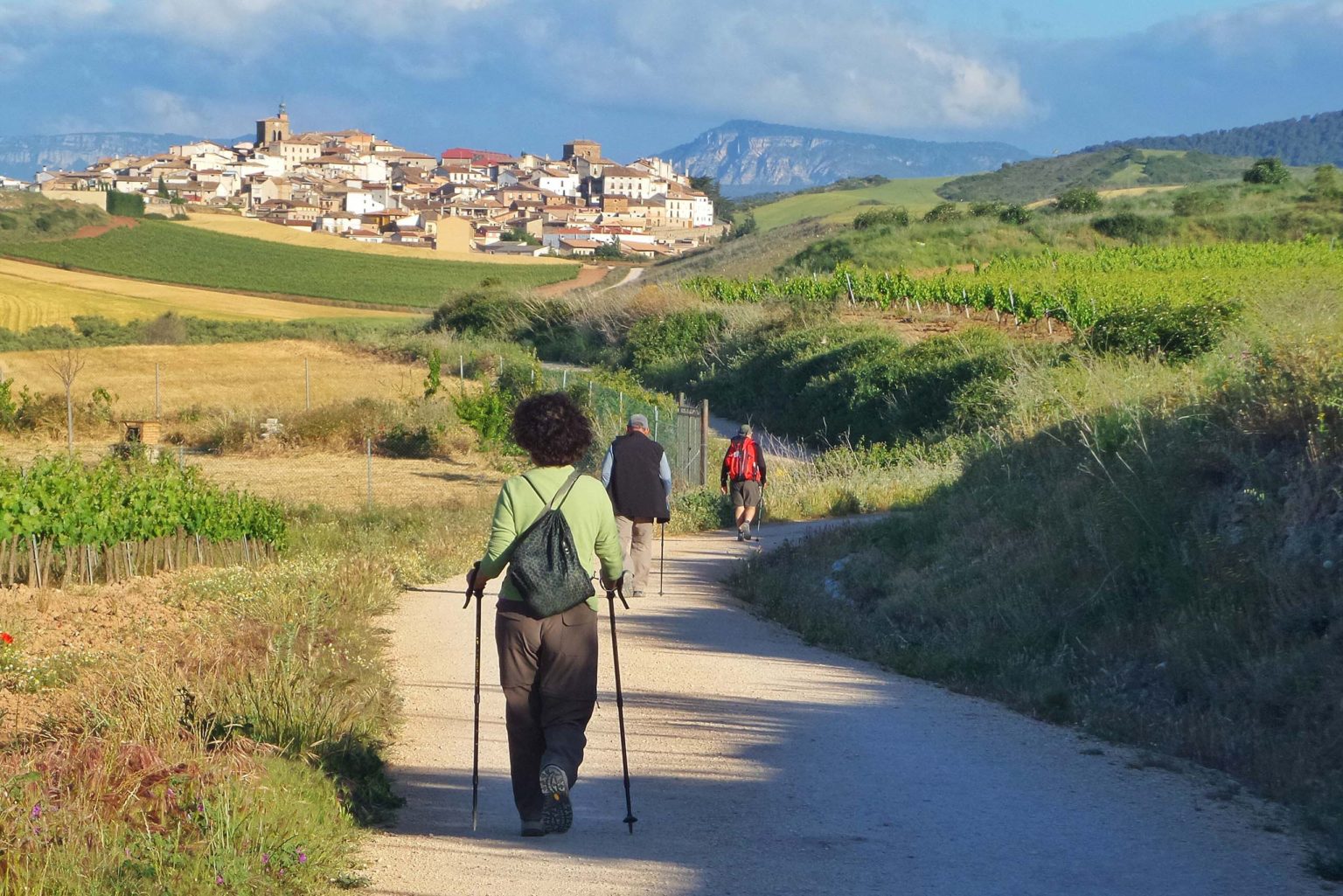


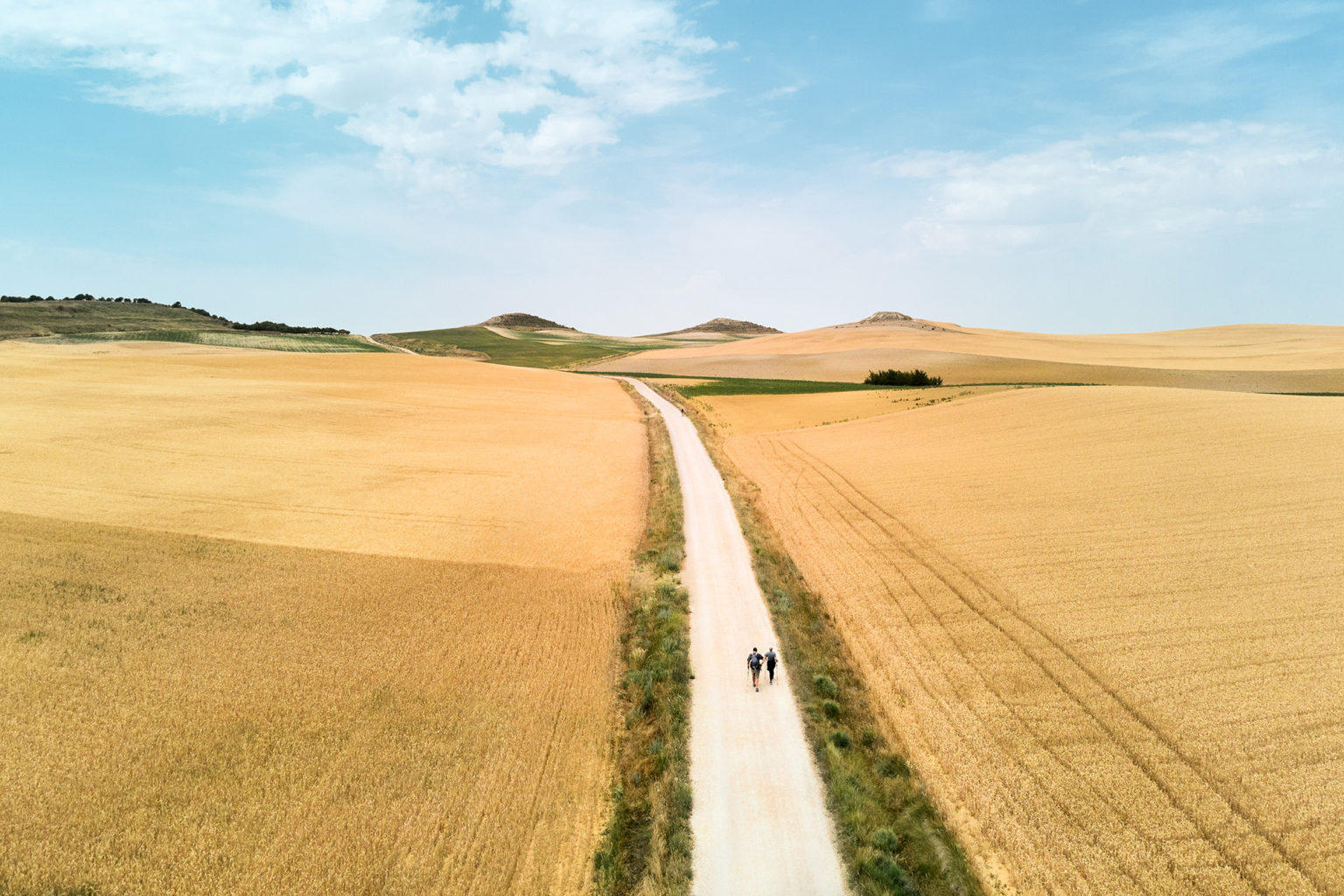
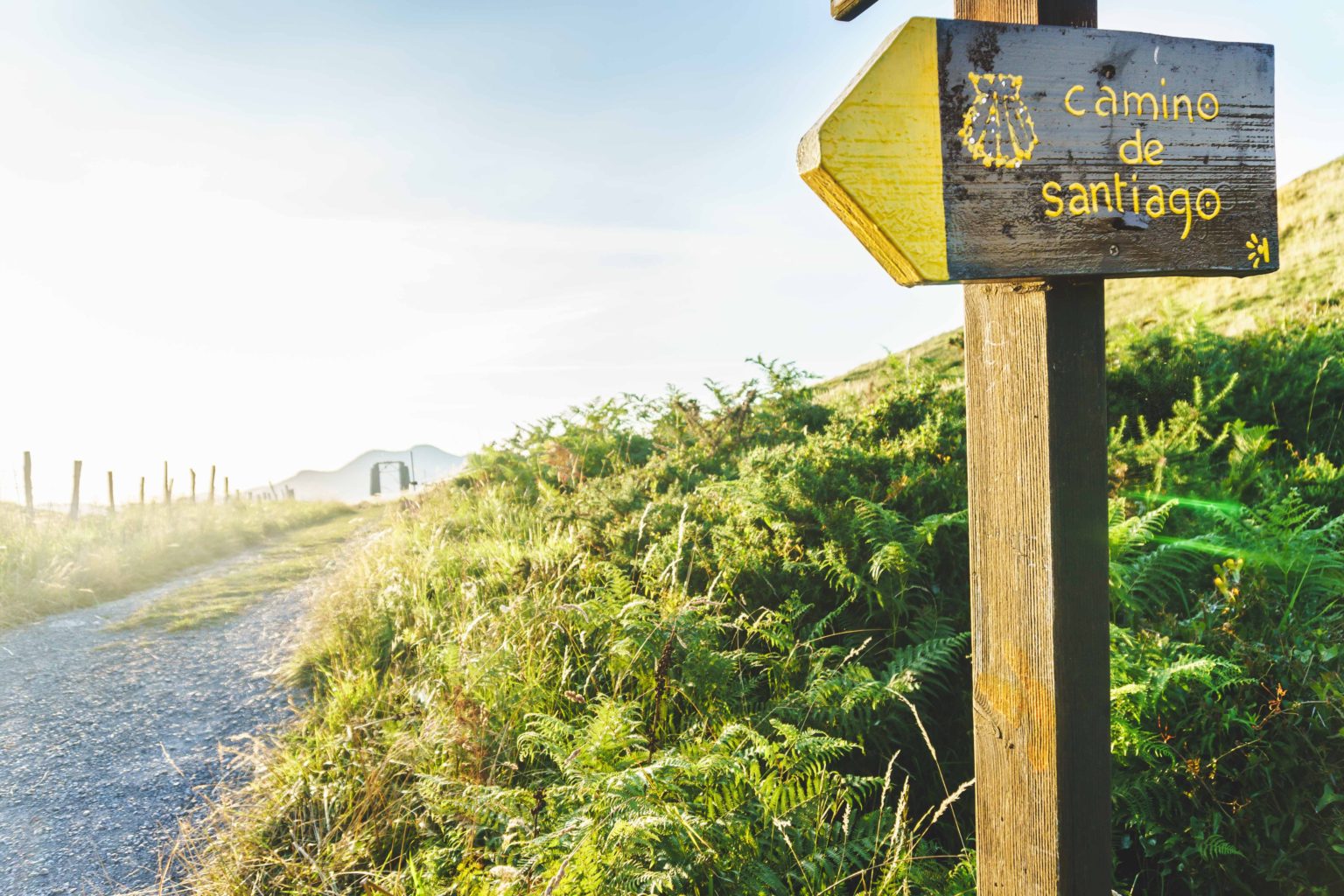

Get ready for your adventure along the Camino Francés with this list of 10 highlights that cannot be missed along the route.
© 2023 All Rights Reserved.